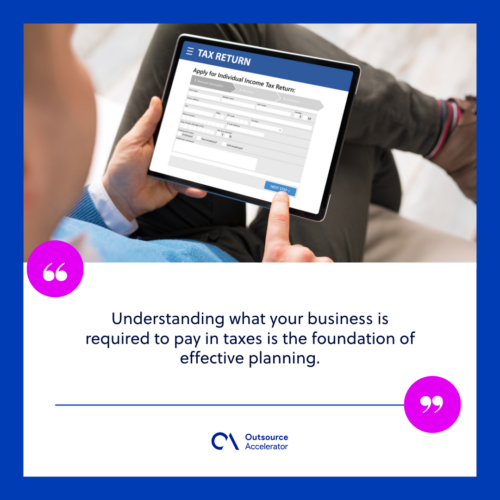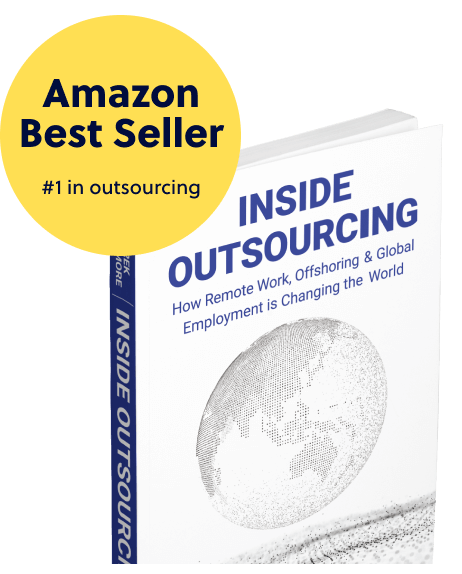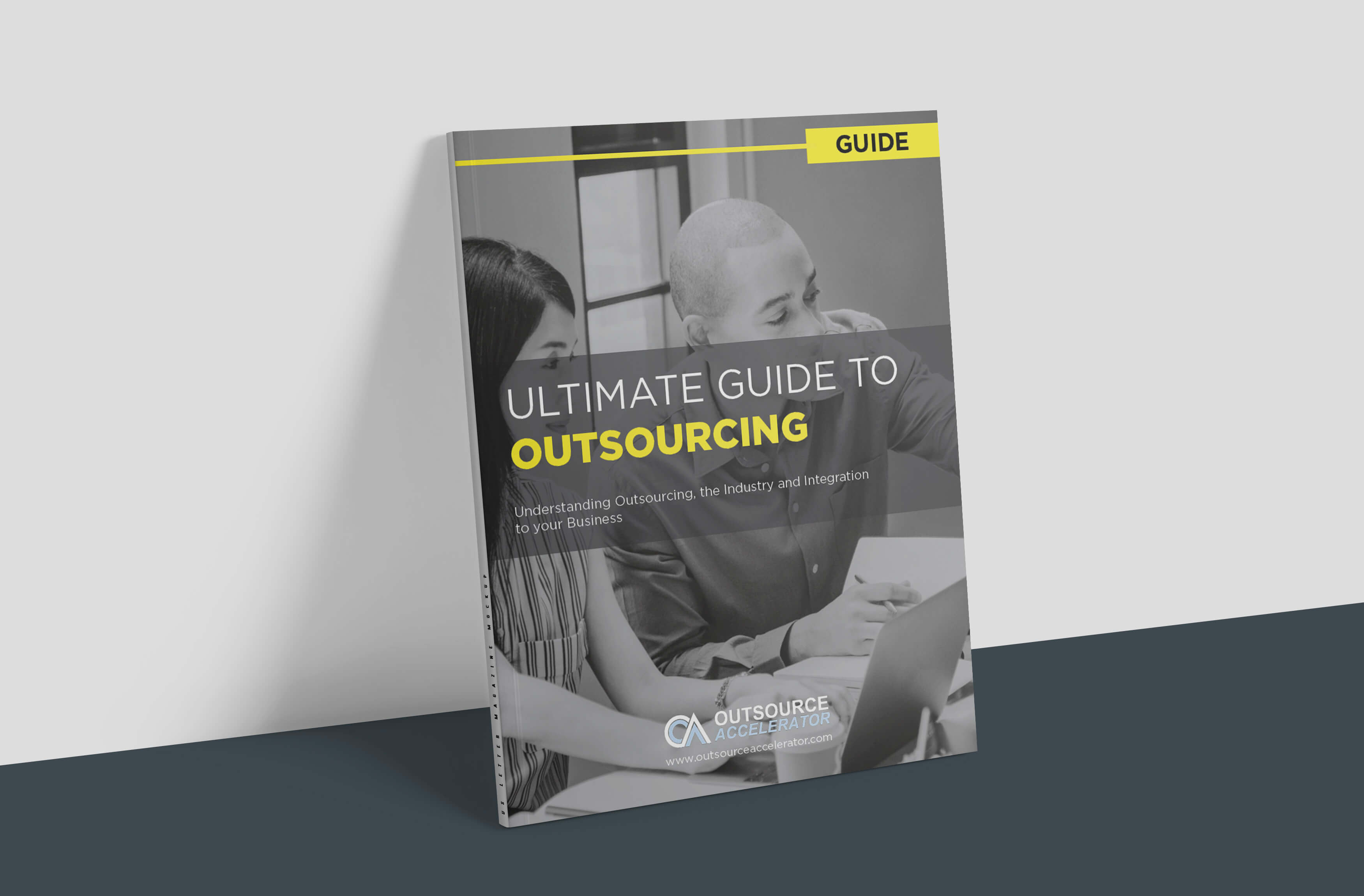How much should I put aside for taxes?

The question “How much should I put aside for taxes?” shouldn’t be an afterthought. Don’t be like a business that puts tax planning on the back burner until deadlines loom.
Without proper savings, you’re on your way to getting significant financial strain and compliance penalties.
This guide offers a practical framework to help you confidently determine how much to set aside for taxes and manage those funds wisely and consistently.
Steps to determine how much you should put aside for taxes
You don’t want to scramble for cash later or make decisions based on what’s left after taxes.
Here’s a step-by-step process designed to help your business answer the question: How much should I put aside for taxes?
1. Identify what taxes your business owes
Understanding what your business is required to pay in taxes is the foundation of effective planning. Each type of tax comes with its own deadlines, calculation methods, and rules.
Start with your business entity type: C-corporation, S-corporation, partnership, or LLC. Your structure determines how you’re taxed, whether directly as a corporation or via pass-through income.
Next, list all applicable taxes, including:
- Federal corporate income tax: C-corporations pay a flat 21% tax.
- Payroll taxes for any employees: Social Security (6.2%) and Medicare (1.45%)
- Federal Unemployment Tax Act (FUTA): (0.6% of the first $7,000 per employee)
- State Unemployment Tax Acts (SUTA): This varies by state and your experience rating
- Sales tax: Required if you sell taxable goods or services and have nexus in a state
- Excise taxes: Imposed on fuel, alcohol, air transport, and other regulated categories
Overlooking even one category can throw your calculations off and leave you short. Once identified, create a master tax calendar with due dates and estimate payment schedules to keep your planning structured.

2. Determine the right percentage to set aside
Your next priority is figuring out how much to reserve from your revenue streams on a consistent basis. This percentage must reflect your business type, location, and income projections, and should be updated regularly.
This is a good start to answer your question, “How much should I put aside for taxes?”
As a general rule of thumb, U.S.-based businesses can consider the following guidelines:
- C Corporations: Set aside at least 25% to 35% to cover federal and state corporate taxes.
- S Corporations and partnerships: While these are pass-through entities, you should still allocate 30% to 40% of net income to cover tax liabilities passed on to shareholders.
- Employers with payroll responsibilities: Set aside approximately 15% to 20% of gross payroll costs to cover the employer share of Social Security, Medicare, FUTA, and SUTA taxes.
But overall, setting aside a minimum of 25% ensures you’re well-covered.
Example scenario:
Let’s say you’re a corporation in NYC that earns $500,000. Based on a 21% federal rate and a 6.5% New York state corporate income tax, your company should expect to pay approximately $137,500 in taxes.
Here’s the breakdown:
- Federal: 21% of $500,000 = $105,000
- State: 6.5% of $500,000 = $32,500
- Total: $137,500
Setting aside at least 25% of taxable income in this case ensures the business remains compliant and well-prepared.
3. Choose a saving method that matches your income
You should align your savings method with your revenue pattern. Here’s a methodical approach to saving for taxes that adapts to your income cycle:
Per-payment method
This is suitable for businesses that receive inconsistent income. Each time your business receives a payment from a client or customer, allocate 30% of that amount directly into a designated tax savings account.
This method works particularly well for businesses with less frequent but higher-value transactions, such as project-based or contract work.
Monthly method
The monthly method works best if this is your business’s first profitable year.
Here’s how to do it:
- Work out your average monthly income.
Add up your total business income from the start of the financial year to the current month. Divide that number by how many months have passed.
For example, if it’s June and your income from January to May is $250,000, divide that by 5. Your average monthly income is $50,000.
- Set aside 30% of that average every month.
In this case, 30% of $50,000 is $15,000.
At the end of each month, transfer that amount into your tax savings account.
Yearly method
The yearly method makes sense when your business filed taxes last year and you expect your income to stay about the same.
Here’s how to do it:
- Use last year’s total business income.
Take your gross income from last year’s tax return and divide it by four. This gives you an estimate of your quarterly income for the current year.
- Set aside 30% of that quarterly amount.
That figure is how much your business should save and pay for each quarterly tax payment.
For instance, if last year’s total income was $400,000, divide that by four to get $100,000. Then, 30% of that is $30,000 per quarter.
4. Use a separate account for tax savings
Mixing tax savings with your operating funds is a recipe for financial mismanagement. It can blur your visibility, increase the likelihood of overspending, and create a major shortfall when taxes are due.
You should open a separate business bank account specifically for tax reserves. Label it clearly (e.g., “Tax savings account”) and assign restricted access permissions.
Pro tip: Choose a high-yield business savings account if possible—this allows your tax reserves to earn modest interest while remaining untouched.

So, how much should I put aside for taxes?
We’re glad you asked, “How much should I put aside for taxes?” because it shows you’re actively managing your cash flow and taking responsibility for your business’s financial health.
Regularly setting aside the correct amount helps you manage your finances effectively and prevents unexpected strain when tax payments are due.







 Independent
Independent




